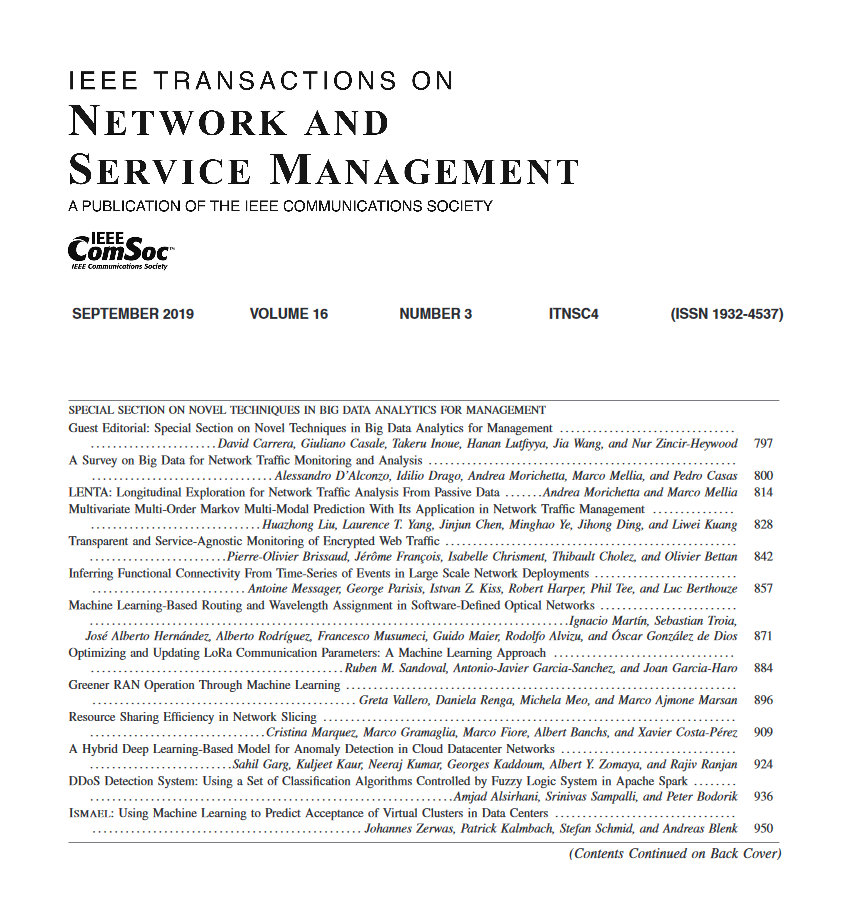Challenges in Securing UAV IoT Framework: Future Research Perspective
IF 5.4
2区 计算机科学
Q1 COMPUTER SCIENCE, INFORMATION SYSTEMS
IEEE Transactions on Network and Service Management
Pub Date : 2025-03-27
DOI:10.1109/TNSM.2025.3554354
引用次数: 0
Abstract
Unmanned Aerial Vehicles (UAVs) offer the immense capability for allowing novel applications in a variety of domains including security, military, surveillance, medicine, and traffic monitoring. The prevalence of UAV systems is due to the collaboration and accomplishment of tasks efficiently and effectively. UAVs embedded with camcorders, GPS receivers, and wireless sensors propose enormous promise in realizing the Internet of Things (IoT) service delivery in vast domains. It results in establishing an airborne field of the IoT when empowered with communication protocols of LTE, 4G, and 5G/6G networks. However, numerous difficulties must be addressed before UAVs may be used effectively namely privacy, security, and administration. Conspicuously, in the current article, novel UAV-specific domains enabled by IoT and 5G/6G technology are explored. Moreover, the presented technique assesses sensor requirements and provides an overview of fleet management systems that address aerial networking, privacy, and security concerns. Furthermore, a framework based on the IoT-5G/6G aspect is proposed which can be deployed over UAVs. Finally, in a heterogeneous computational platform, the proposed framework provides a complete IoT architecture that enables secure UAVs.保障无人机物联网框架的挑战:未来研究展望
无人驾驶飞行器(uav)提供了巨大的能力,允许在各种领域的新应用,包括安全,军事,监视,医学和交通监控。无人机系统的流行是由于高效和有效地协作和完成任务。嵌入摄像机、GPS接收器和无线传感器的无人机在广泛领域实现物联网(IoT)服务交付方面具有巨大的前景。在LTE、4G、5G/6G等通信协议的支持下,将形成物联网的空中领域。然而,在有效使用无人机之前,必须解决许多困难,即隐私,安全和管理。值得注意的是,在本文中,探讨了由物联网和5G/6G技术支持的新型无人机特定领域。此外,提出的技术评估传感器需求,并提供了解决空中网络、隐私和安全问题的机队管理系统的概述。此外,提出了一种基于IoT-5G/6G方面的框架,该框架可部署在无人机上。最后,在异构计算平台中,提出的框架提供了一个完整的物联网架构,可以实现安全的无人机。
本文章由计算机程序翻译,如有差异,请以英文原文为准。
求助全文
约1分钟内获得全文
求助全文
来源期刊

IEEE Transactions on Network and Service Management
Computer Science-Computer Networks and Communications
CiteScore
9.30
自引率
15.10%
发文量
325
期刊介绍:
IEEE Transactions on Network and Service Management will publish (online only) peerreviewed archival quality papers that advance the state-of-the-art and practical applications of network and service management. Theoretical research contributions (presenting new concepts and techniques) and applied contributions (reporting on experiences and experiments with actual systems) will be encouraged. These transactions will focus on the key technical issues related to: Management Models, Architectures and Frameworks; Service Provisioning, Reliability and Quality Assurance; Management Functions; Enabling Technologies; Information and Communication Models; Policies; Applications and Case Studies; Emerging Technologies and Standards.
 求助内容:
求助内容: 应助结果提醒方式:
应助结果提醒方式:


